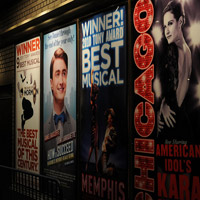Behind the Scenes at a Broadway Stage Shop

|
On Broadway, there is a lot that unfolds behind the scenes in order to make what we see a reality. The spectacular sets that we marvel at when we attend shows are the result of the effort and hard work that takes place at a Broadway stage shop. Here, anywhere from 30 to 150 people can be working at one time as carpenters, iron workers, and scenic artists. It is the work of these artists that provides the scenic backdrops we love and the scenery that helps Broadway stories develop and naturally evolve before our eyes.
The workers who are a part of the stage shop team are incredibly talented and inventive. Most are not required to have a degree, but generally art school is required for scenics, theater design needed for engineers, and technical design is considered a must for the automation department. Granted, many of the shop workers have had experience in other related fields, such as construction, which come as an added bonus in terms of experience and knowledge. Reddit insider WWHarleyRider shared his experience with the talent he has seen while working at a Broadway stage shop. He stated, “I saw a guy make an oven out of a large metal tube and a propane heater in order to melt plastic siding just enough to be able to mold it without it becoming liquid or burning. I think that was the most inventive I’ve seen first hand.”
Most of the main shop workers work year round, though the amount of people working at one time can vary as needed. 130 people can be working one week and closer to 50 the next week. Plus, the same people may or may not be needed each week depending on the type of work required. For instance, more carpenters may be needed one day while more iron workers may be required the next day.
Sometimes shop workers get to interact directly with show actors or directors if they come in to the shop. At times dancers or acrobats will make the trip to test out scenery pieces or directors may stop by to ensure that the scenery pieces are in direct alignment with their vision for the production.
Construction of set pieces are generally built to break apart based upon two factors: truck size and loading conditions at the intended venue (i.e. size of the loading door, elevator dimensions, etc.). For this reason Broadway and touring show sets are built quite differently in order to accommodate their specific needs. For example, some connecting hardware that protrudes from the bottom of a portion of scenery might be alright for Broadway because it will only travel once and then be assembled on installation. This however would not be suitable for a touring show, which will travel constantly and thus will see a considerable amount of abuse resulting in hardware that will break off on tour and be in need of constant repair.
Working in the stage shop is a job for those who love the theatre, but may not necessarily have the talent or the nerve to pursue acting on the stage as a career. The work done in the stage shop allows for creativity and talent to be expressed in a more hands on way that is still very vital to the overall production.
Author: Diamond Grant
